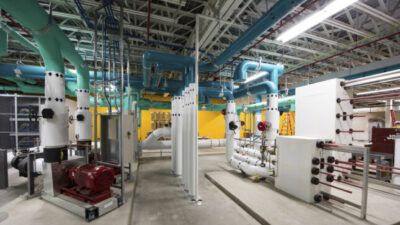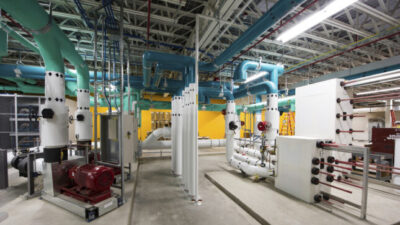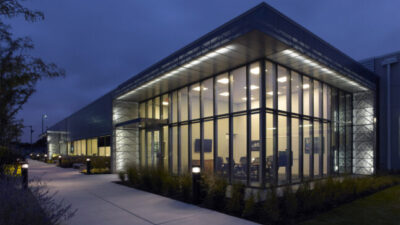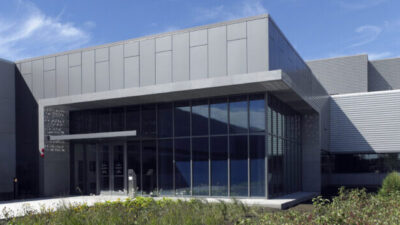Data center facilities are a growing market valued at $18.8 billion, according to Morrissey Goodale.

Data centers are facilities containing information technology equipment including servers and networking computers for data processing, data storage and communications. Organizations use data centers to house their critical applications and data.
Market overview for data centers
-
The United States accounts for roughly 40% of the global market for data centers, with over 2,700 locations as of 2022.
-
Two broad categories of data center ownership are enterprise and colocation.
-
Enterprise (or corporate) is a fully company-owned data center used to process internal data and host mission-critical applications.
-
Colocation data centers are owned and operated by providers who lease the data space to multiple tenants.
-
Architectural planning and design range between 7% and 25% of total data center construction costs. Mechanical and electrical costs can reach up to 85% of initial capital investments.
-
Power expenses can range between 40% and 80% of the overall cost of operating a data center.
Market size for data centers
The market size is $18.8 billion. This is based on 2022 supply under construction in primary and secondary U.S. markets, applying cost of $8 million per MW.
Market outlook for data centers
-
According to a McKinsey report, U.S. data center demand is forecasted to grow by about 10% each year until 2030.
-
Data center systems rely on multiple energy sources to operate, such as diesel, natural gas, and water. Energy demands and environmental concerns can hinder growth in certain areas as there is pressure to find efficiencies in energy use.
-
This past May, the U.S. Department of Energy announced an investment of $40 million towards 15 projects aiming to develop high-performance, energy-efficient cooling solutions for data centers.
-
Land availability and power procurement have become key constraints within the industry, making it harder for new capacity to come online.
-
Additionally, the current economic environment with high interest rates has driven companies to postpone expansion investments, delaying fulfillment of current enterprise demands.
Drivers for data center industry
Drivers include digitization of business processes and applications, demand for cloud-based architecture, edge computing, IoT, AI adoption, data traffic, energy efficiency and power infrastructure and environmental concerns.
Trends for data center industry
-
Most data centers are single-story constructions. Multi-story projects may become more common as urban markets requiring low latency continue to see land price increases and power-sourcing issues.
-
Multi-story data center buildings require heavy-duty equipment to support sophisticated cooling and electrical systems.
-
Large tech companies will continue to demand new buildings and retrofits for hyperscale data centers, seeking to support higher degrees of automation, scaling and reliability.
-
Environmental concerns have grown higher around data center projects. As regulations continue to be developed, assessments during the planning phase will be in high demand to determine potential local impacts, including water stress levels.
-
Availability of skilled electricians is an important factor in deciding the ideal locations for data centers.
Hot spots for data centers
-
Secondary markets in central Washington, Austin/San Antonio, Charlotte/Raleigh and Reno.
-
Core markets such as Northern Virginia, Silicon Valley, Dallas-Fort Worth, Atlanta and Hillsboro, Oregon.
-
Hyperscalers and colocation vendors.
-
Areas with affordable power and renewable energy options.
– Morrissey Goodale is a CFE Media and Technology content partner.



